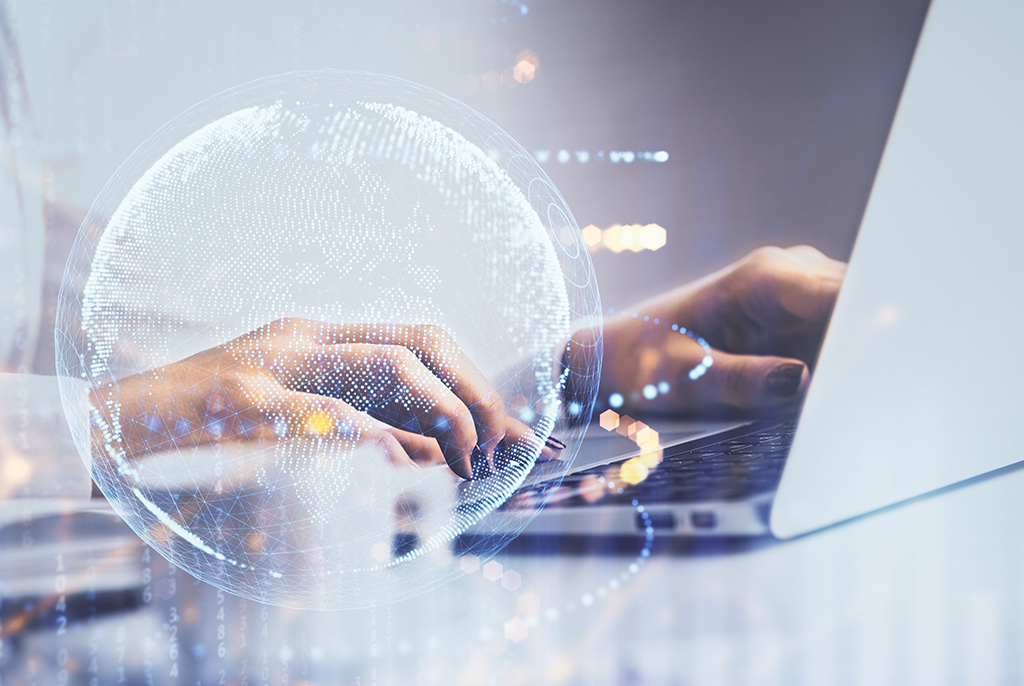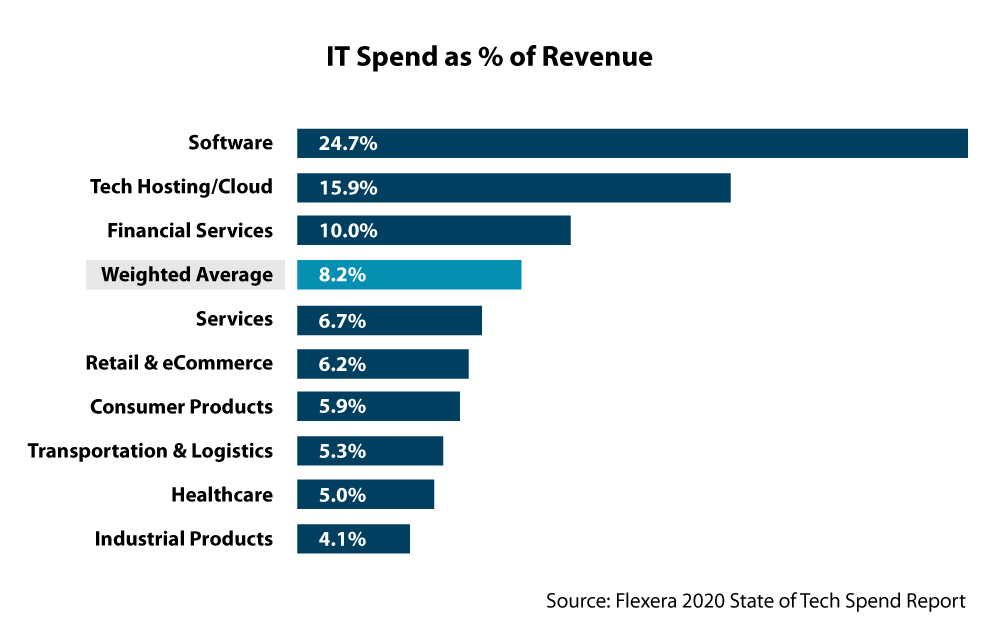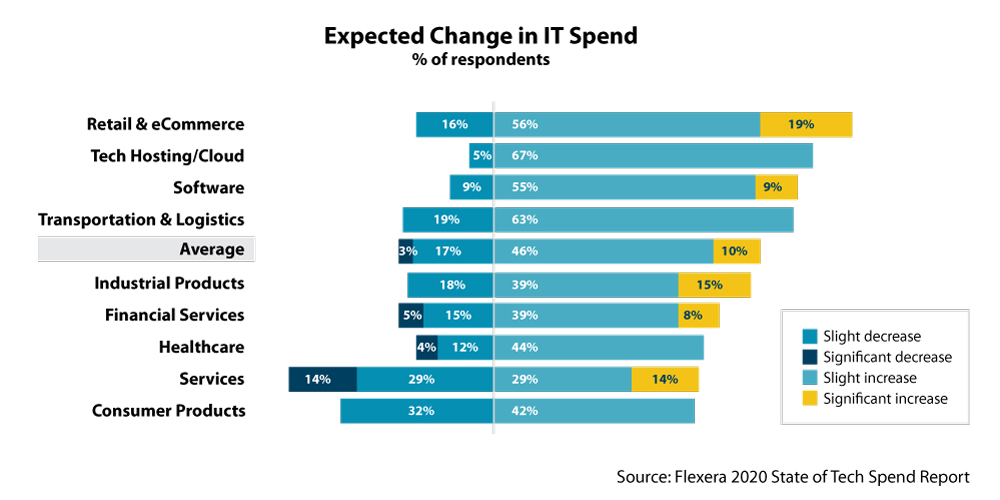Technology trends facing business in 2021 and beyond

Editor’s Note: This article is part of a series on external trends. In Part 3, we study technology trends that will impact business in 2021 and beyond.
To discover the most recent technology trends, check out our article: Technology Trends Facing Business in 2022 & Beyond
One learning from the pandemic is the need for a new construct and mental model for technology. In almost every industry, some form of technology will become the product or an enabler to it. Those who cannot participate in digital transformation will be left behind.
Never again will IT departments be viewed as the people who only replace aging equipment and install desktop software. Technology departments of the future will be adept at deploying custom applications that make companies more productive and improve the customer experience.
Central to the next wave of innovation and productivity will be “third platform” technologies — those that mark the convergence of mobile, cloud, internet of things (IoT), blockchain, artificial intelligence (AI), big data and robotics.1 The confluence of these technologies is completely altering how we live and transact, and will ultimately drive decisions on how we make money. Looking forward to 2021, management teams should recalibrate based on the following technology trends.
Other 2021 trends
Part 1: Ecological trends facing business in 2021 and beyond
Part 2: Social trends facing business in 2021 and beyond
Part 4: Economic trends facing business in 2021 and beyond
Shifts in investment
The typical private company’s IT department does not have the resources or acumen to deploy third platform technologies like AI, which is costly to implement. The IT department of the future will include higher-caliber, better paid technologists capable of workflow optimization. IT spending as a percentage of revenue exceeds 8 percent for all firms but is much lower in commercial and industrial companies (closer to 4 percent).

Digital everywhere
The most evident measure of digital transformation has been accelerated adoption of collaboration software, CRM and other software applications that users require on demand on their devices. From sales to ops teams, users need all critical work information on any device at any time. Private companies are looking for solutions that are more nimble than traditional ERP (enterprise resource planning) applications. They can find such utility in a litany of apps that provide reporting in real time.
Providers are seeking out client-facing technologies that directly impact customers. Consider the app Zocdoc. It enables you to find a doctor in your insurance network and see them the same day. The technology that bring the patient to the physician is almost as valuable as the service the physician provides.
Such disruption is ubiquitous. Restaurants who moved to digital menus and touchless payments (such as McDonald’s) have fared better during the pandemic. Chipotle just launched its first “digital only” restaurant. Electronic payments are also magnifying the value of digitization as providers have better access to customer information and their census data.
Robotics and automation
According to McKinsey, robotics and automation adoption dramatically increased during the shutdown, despite widespread delays as a result of COVID-19 protocols and shipments from Europe, Japan and Korea being disrupted.

In particular, providers sought out technologies that replaced labor. Not only are robots faster, cheaper and more accurate — they also don’t get sick. The first industrial robots were intended to replace functions that were too costly or dangerous to be completed by humans. A new wave of “cobots” are intended to collaborate with humans.
Click and mortar
Among the companies investing the most are retailers in a race to deploy omnichannel strategies. Eighty-five percent of retailers expect to spend more on technology in 2020 — more than any other sector.

With ecommerce revenue up over 30 percent this year, retailers are scrambling to improve their technology infrastructure. They have also had to adapt to new consumer needs such as curbside pickup, which surged more than 200 percent in April. Self-serve kiosks that enable omnichannel transactions will become the norm.
Retail is also under attack from cyber-criminals who have identified new “vectors.”
Extended reality (XR) – virtual and augmented reality (VR/MR)
Reality tools are making their way into sectors such as education and healthcare. The pandemic has escalated remote surgeries and other healthcare applications that may even include self-serve options. Today, technology exists for a patient to have an eye exam through high resolution cameras and then be prompted to a series of eyeglass options based on their prescription.2
The commercial and industrial applications of XR, VR and MR are endless. Many companies are already using augmented reality in training and customer service.
AI-enabled engineering and manufacturing
Artificial intelligence will not only design products, but make decisions about how they are to be procured and produced. For example, today’s development of new drugs relies principally on trial and error, and AI will radically improve the cycle time to bring products to market. Data and analytics will feed decision making in real time. Intelligent algorithms will improve quality and input. It is predicted that AI in manufacturing will reduce waste by 50 percent or more in some manufacturing environments.3
Cloud
Cloud computing continues to drive valuation of technology firms. The pandemic spiked demand for public cloud apps and development services. The Department of Defense awarding a contract to Microsoft was the latest salvo as Microsoft and Amazon Web Services battle for web supremacy. Forrester predicts that the cloud infrastructure market will swell by 35 percent in 2021, with Alibaba becoming the third largest provider.4 There is continued movement toward serverless services.
Privacy-based computations
New solutions are emerging that combine three technologies. The first provides a platform for data such as bank account records to be exchanged. Then data is decentralized for processing, only for a third technology to then encrypt it for transmission.
Cyber-security
The pandemic was a catalyst for cyber-attacks (up 238 percent in fintech).5 Phishing attacks result in about 80 percent of corporate security breaches, with 94 percent of malware being installed via email.
Hackers are also adapting. As the industry has invested in mitigation techniques, state-sponsored actors are coordinating ransomware attacks, with more than 50 percent involving “hands-on” hackers. Private companies are investing in intranet, firewall, antivirus and malware solutions to stem the tide.
Big data
Another trend amplified by the pandemic was a critical need for dashboards and real-time analytics. Private companies are scrambling to ensure integration and access to the right reporting tools. The rapid adoption of Microsoft Teams has also moved Power BI to the forefront as an easy-to-use, plug-and-play analytics platform. Big data (the ability to pull data from multiple sources) is providing companies the opportunity to improve key performance indicators (KPIs) that are critical in an age of distributed work.
5G
As the U.S. and China remain entangled in rhetoric, it’s hard to imagine the Biden administration pulling back on restrictions placed on Huawei, a leading provider of 5G technology. Australia, Canada, Japan and the UK have also reversed course, citing security concerns. Nokia and Ericsson are alternative global suppliers, but a duopoly is viewed as bad for competition and innovation.6 As U.S. cell carriers and producers like Apple introduce a new generation of phones, it has been reported that processing speeds and latency improvements are dramatic. 5G will enable other technologies from IoT to autonomous vehicles (we cover electric vehicles in the ecological trends post in this series).
The FCC approved a $9 billion satellite broadband for a 5G wireless fund in rural areas. SpaceX’s low-earth satellites will serve this market.
Technology and COVID-19
The pandemic has permanently altered the trajectory of our businesses and how we think about workplace safety. The mashup of these technologies will present solutions to mitigate the spread of COVID-19. Technologies today will allow a user to approach their office building and check in online. Their employer’s custom app will indicate whether they can enter the building safely. Sensors will take their temperature and log the results. The user’s path will be mapped based on social distance protocols. AI and machine learning will enable continuous improvement, and deliver a safer office environment.
The architects of these technologies face newfound oversight in the U.S. and Europe. Amazon, Apple, Facebook and Google find themselves under the microscope amid concerns about privacy, security and corporate responsibility. More regulations seem certain.
Let us not forget that before COVID-19 consumed our daily discourse, cybersecurity was top of mind for most business owners. In 2021, it will be critical that businesses continue to invest in technology.
References
111 Tech Trends for 2021 and Beyond, Businesswire
2The 5 Biggest Technology Trends in 2021 Everyone Must Get Ready for Now by Bernard Ford, Forbes
317 Ways Technology Will Change the World by 2025, World Economic Forum
4Cloud Computing Will Power Pandemic Recovery in 2021, ZD Net
5Cybersecurity Trends to Keep Track of in 2021
6Open Sesame, The Economist, November 7, 2021
Also by this author
- Trends facing business in 2022 and beyond
- The future of work in America [report]
- Human vs. machine: 6 factors that will drive technology investment
- 9 key ways to gather and report useful KPIs
- Trends impacting business in 2020 and beyond
Category: Economic / Future Trends

